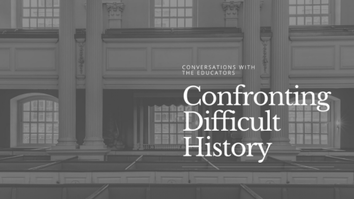|
By Faye Charpentier, History Program Director  On June 11, King’s Chapel History Program staff, King’s Chapel clergy, and congregants engaged in an important conversation about the importance of confronting difficult history. This event was part of a larger conversation about the role and relevance of history to our present moment. As we look towards current events these past few weeks, the difficult histories of both our nation and this church have weighed on many of our minds. The systemic racism, police brutality, and white supremacy in the world are all historically rooted. The study of these histories not only helps us understand how we got here, but can empower us to confront these issues head-on, and shape our anti-racism work today. A James Baldwin quotation from “Unnamable Objects, Unspeakable Crimes,” has been frequently shared on social media lately: The great force of history comes from the fact that we carry it within us, are unconsciously controlled by it in many ways, and history is literally present in all that we do.
1 Comment
By Lily Nunno, Historic Site Educator From 1915 and into the early 1920s the interior of King’s Chapel went through a series of changes: the walls were repainted, new floors were put in, the pews were reupholstered, and the stained glass windows were removed. Like many other buildings in Boston and around the United States, the King’s Chapel interior was reimagined to reflect the Colonial Revival aesthetic. This often involved stripping away any Victorian decoration — like floral motifs— and replacing it with a cleaner and simpler look. This renewed interest in the aesthetics of the 18th century initially began with the Centennial celebration in 1876, similar to the fervor during the Bicentennial. This led to an increased desire to preserve colonial buildings and the homes of historical figures. The idea of historic preservation we are familiar with today was fairly new in the late 18th century. In previous decades, historical buildings — like the home of John Hancock in Boston — were torn down. However, these efforts were not necessarily historically accurate. Pale colors were used when reimagining interiors in the Colonial Revival style, though colonial interiors were often colorful. For example, the pilasters at King’s Chapel were faux pink marble and galley fronts were peach during the 18th century, but during the Colonial Revival redesign the interior of the church was whitewashed. This inaccurate view of the Colonial period extended beyond architecture and interior design. As the United States underwent changes, many white, upper-class, and Protestant Americans yearned for a past they saw as superior to their present. |
King's Chapel History ProgramDive deeper into King's Chapel's 337 year history on the History Program blog. Archives
July 2023
Categories
All
|


 RSS Feed
RSS Feed